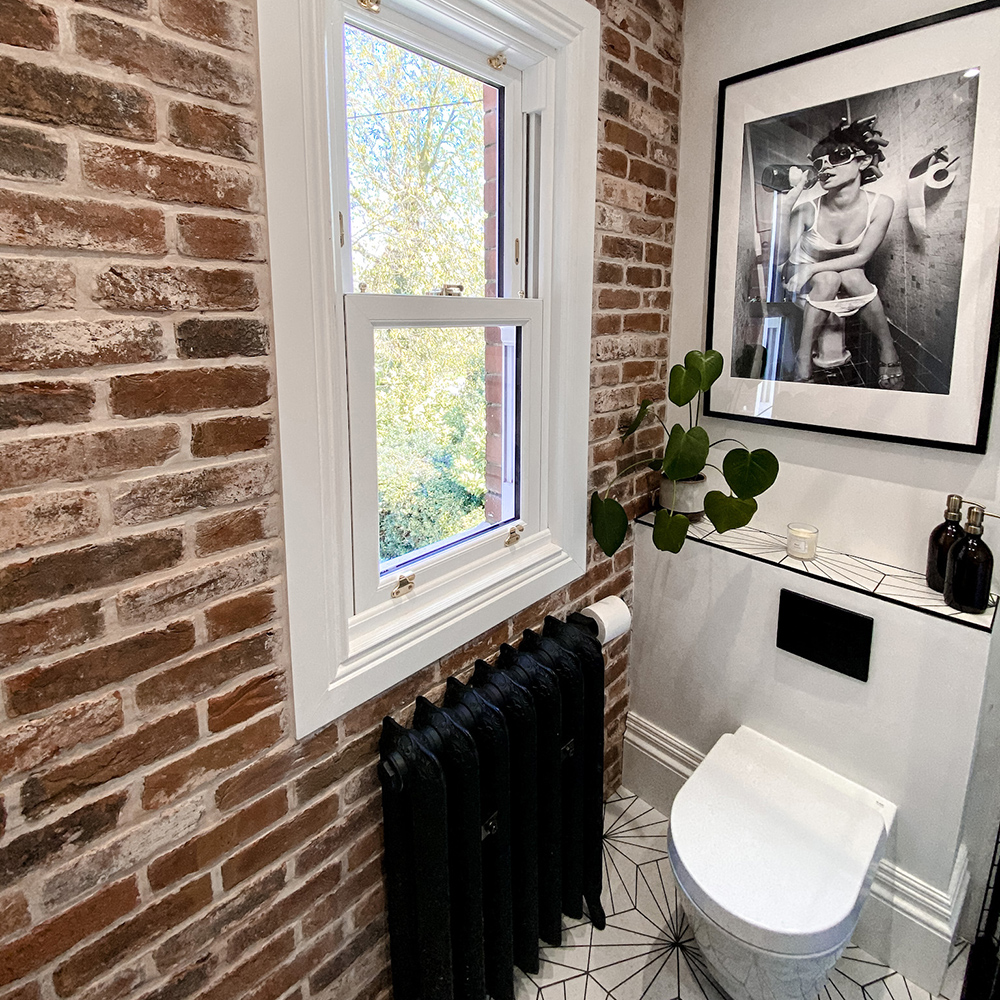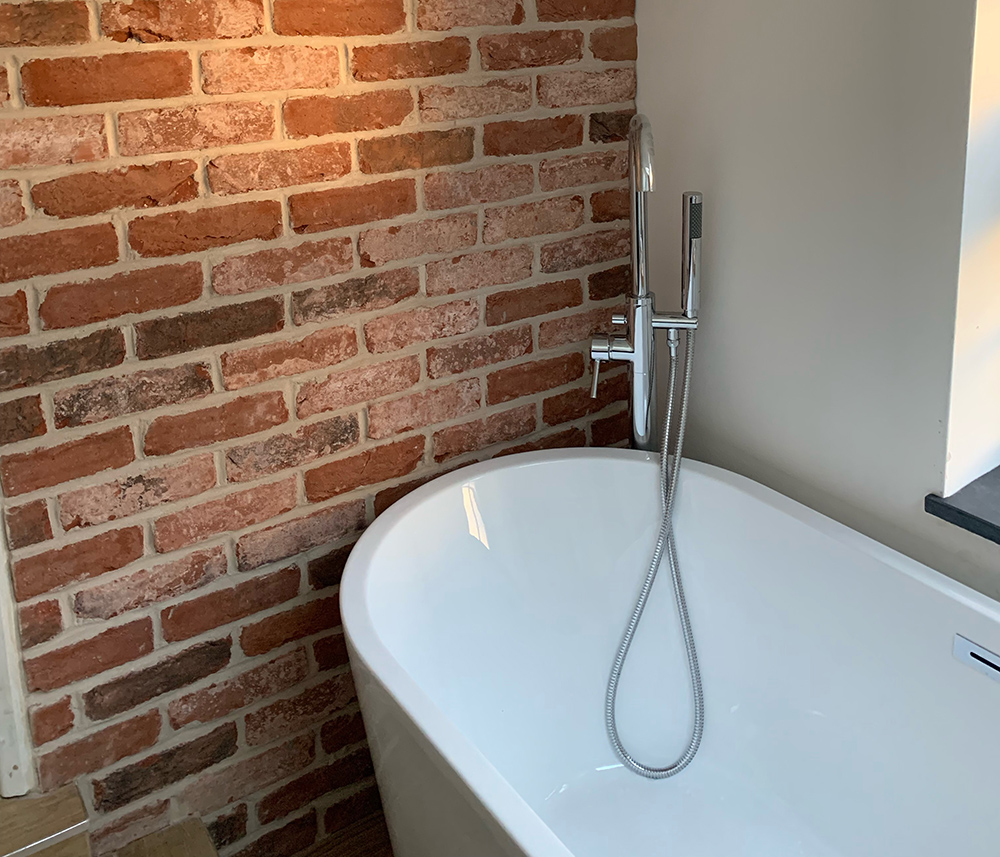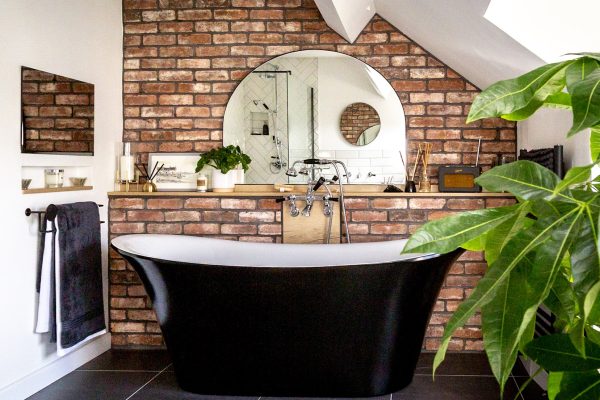A bathroom can be just as stylish as the rest of your home.
White and beige tiles are too plain, we’re looking at brick slips, as they add that something extra to the bathroom.
What Are brick slips
Brick Slips are tiles made from brick. There are a couple of ways they can be made- either cut from a brick (usually you can then make 2 tiles from one brick), or made in the same way as a brick, just thinner.
Bricks are made from clay, which is dug out and then moulded into the cuboid shape that we’re all familiar with. There are a few ways this is done, and the outcome of texture depends on whether it’s pushed into a mould or squeezed through a machine and then cut as it comes out.
The clay is then fired at over 1000 degrees to solidify the clay into what we know as a brick, the small variations in how these steps are done bring different variations of brick.
What am I looking for in a brick slip?
The appeal of brickwork is the raw natural colours and textures that this process brings. This is no different internally from the external appeal- what is different is the amount of attention you pay to the walls inside your house, as opposed to outside it.

Firstly to get the proper look you need to ensure that you get a clay brick, as opposed to an imitation from concrete, or panels of ceramic tile. If you’re looking to create exposed brickwork you should look at reclaimed style brick slips – these have been made to current standards, but then knocked around to give a weathered and rustic look. Otherwise you can look at traditional bricks as you see newer homes built from, or even smooth contemporary ones.
The main thing is that you like the look of it, and you can embrace the natural variations that come with these products.
Are brick slips suitable for a bathroom
Brick slips are absolutely fine in a bathroom. Having said that, there are considerations around the moisture level.
Essentially brick is a porous material, and therefore any liquid or moisture in the air can soak into it. On your house bricks, this evaporates or soaks away with no problem. However inside, you don’t want to damage the walls behind the brick slips.

In the vast majority of bathrooms, having brick on a wall not directly exposed to water is not going to be anywhere near enough to soak through, never mind enough to cause any damage. There is a product that can help give you extra protection though – brick sealant (sometimes called water sealant). This is a liquid that you paint on, and it soaks into the brick, when dry that then repels any moisture, keeping the brick looking exactly the same. You may want to re-apply it every couple of years or so. One thing to make sure is that the wall is completely dry from installation before coating it- otherwise you’ll seal that moisture in.
Can I use them in a shower unit
Yes you can use them in a shower unit, it really brings something different to the bathroom! However, as mentioned above, the porosity of the bricks would cause an issue without specific measures.
There are two things to consider- the wall behind the brick slips, and the look of the slips themselves.
With the constant direct contact, you will need to make sure that behind the brick slips is a waterproof layer, such as a tile backer or cement board- which will then mean that any water can drain down back into the shower.
The brick sealant is also relevant here, it is certainly recommended- firstly to protect the board behind so no water gets through to it anyway, but also to maintain the look of your brick slips- when wet they will be much darker than the dry sample panel and images that you chose them from.
You will need to apply the sealant more regularly here to keep it topped up- every 6 months or so. Therefore you can also consider other things to make the maintenance easier, such as a clear varnish, or clear resin- so no water actually is in contact with brick.
Once you’ve chosen the right brick slips for you, you simply need to think about how much moisture they’ll be exposed to- water vapour and the odd splash won’t cause issues, but if you want them directly in contact with water then take precautions.
